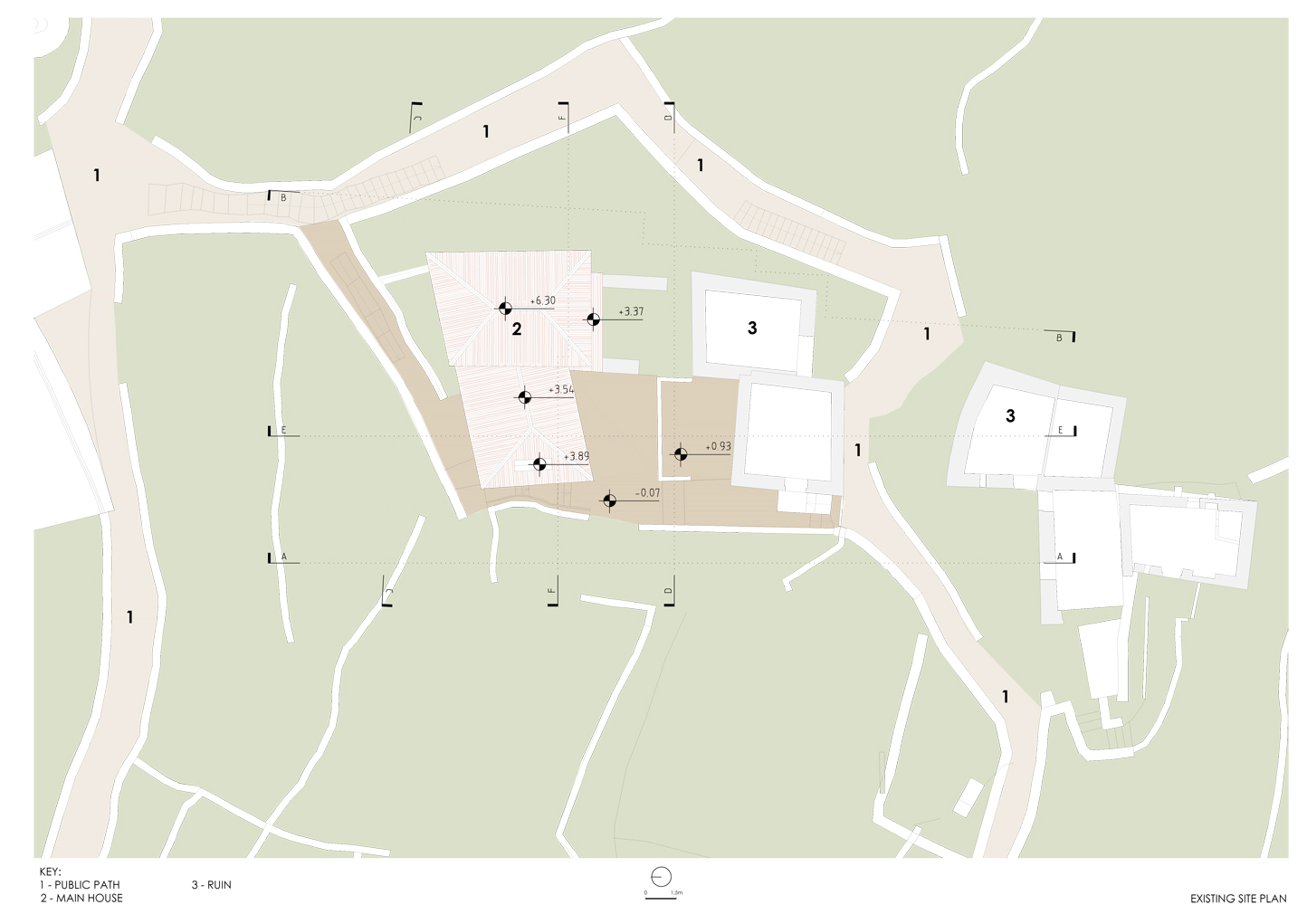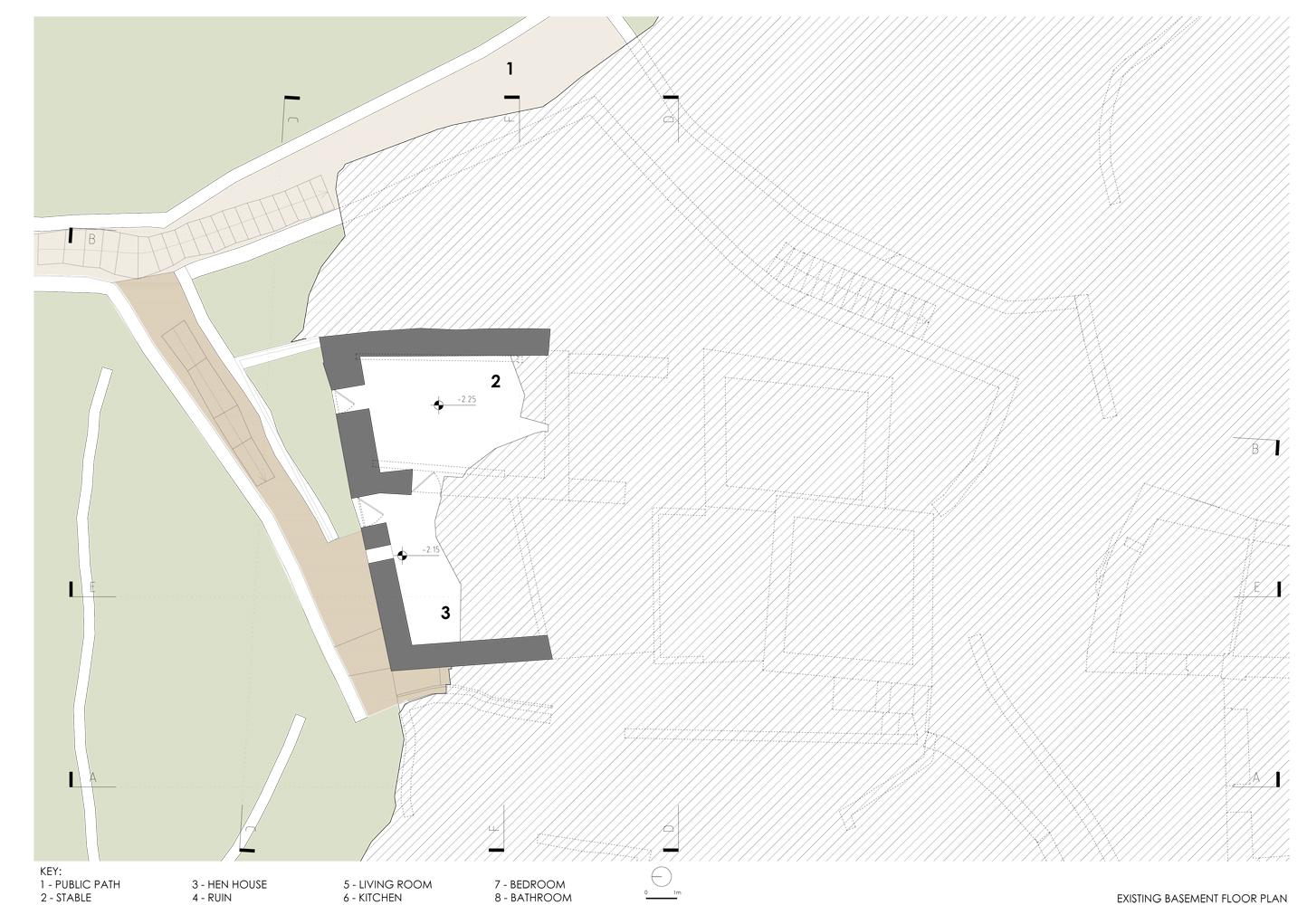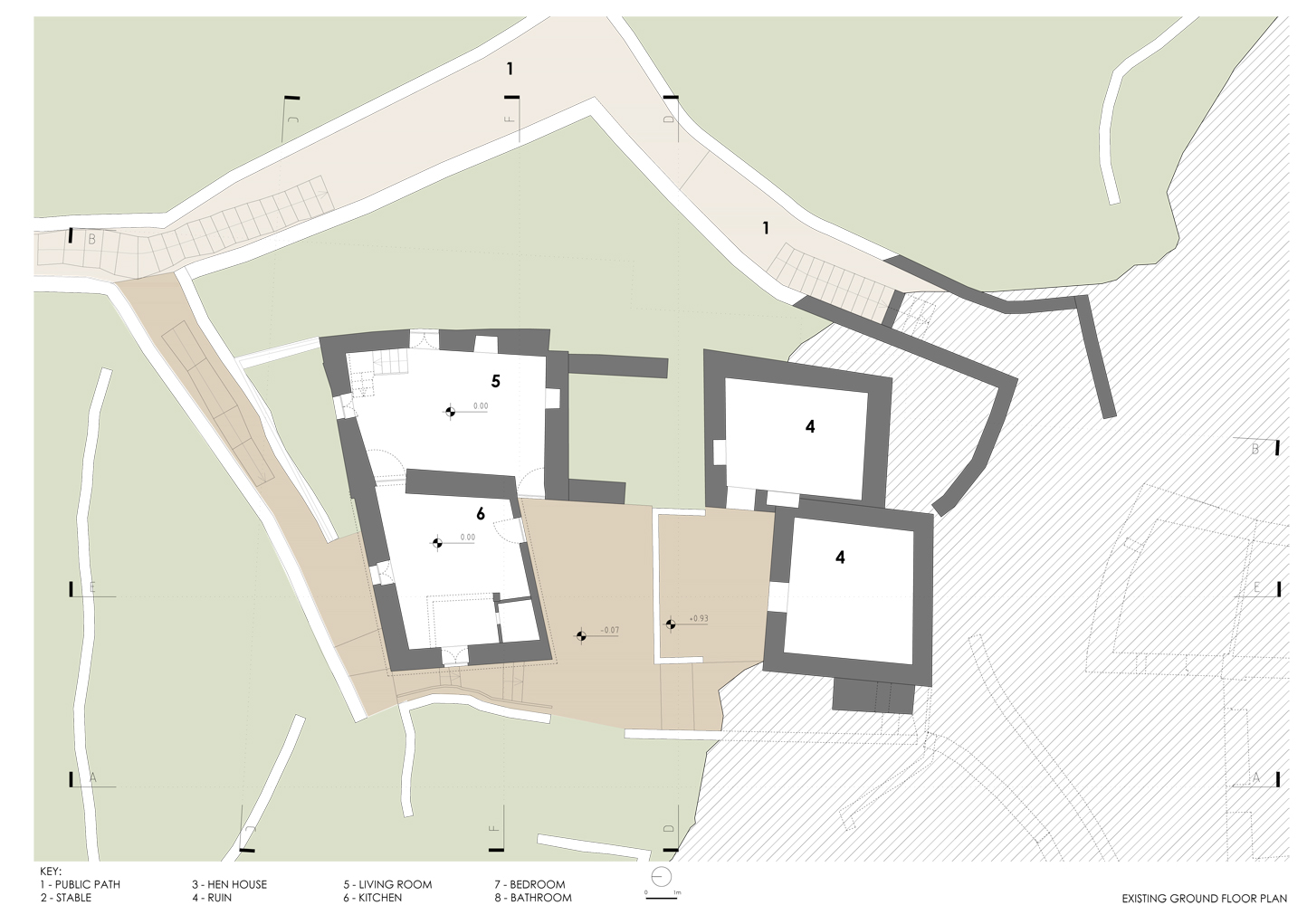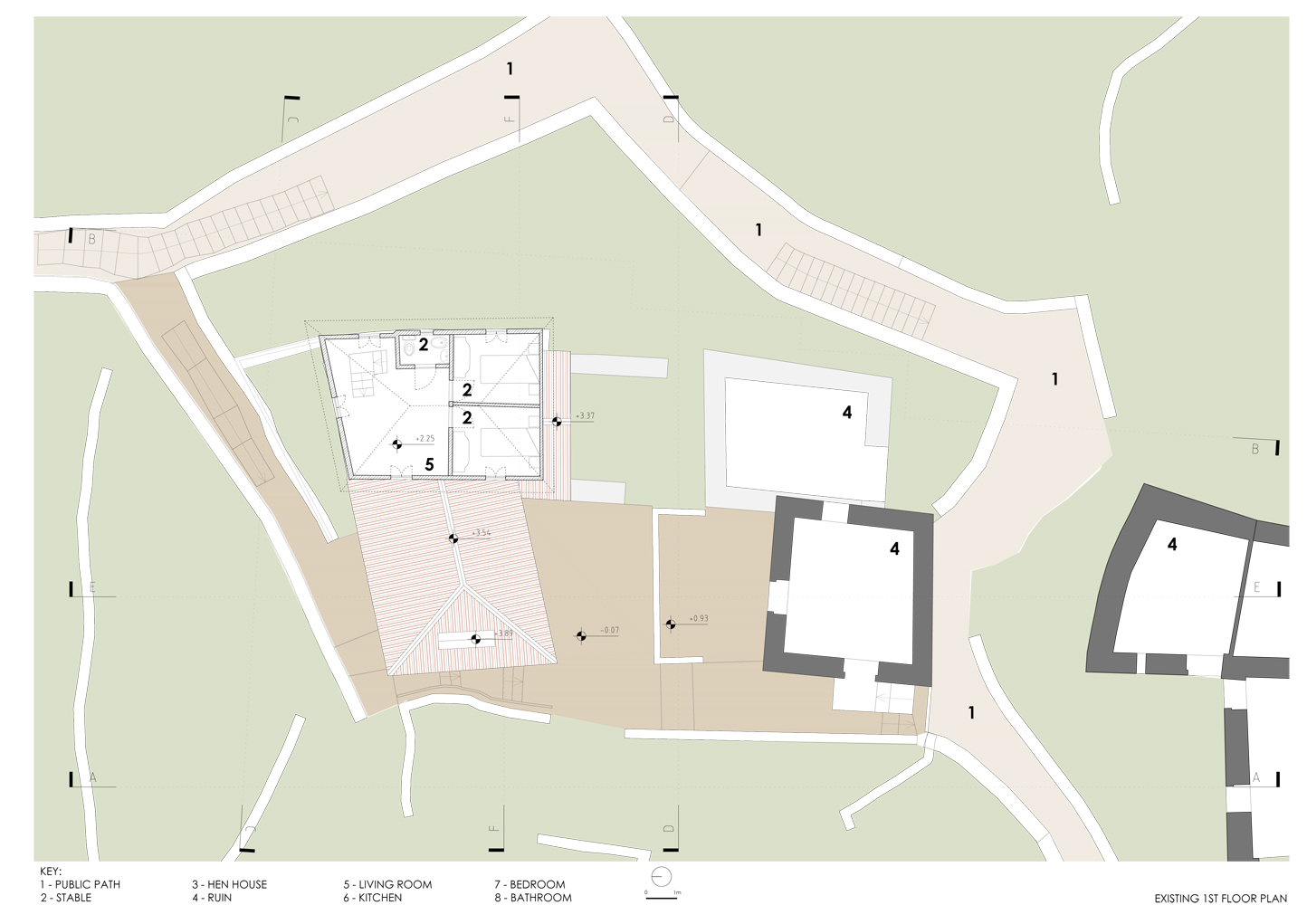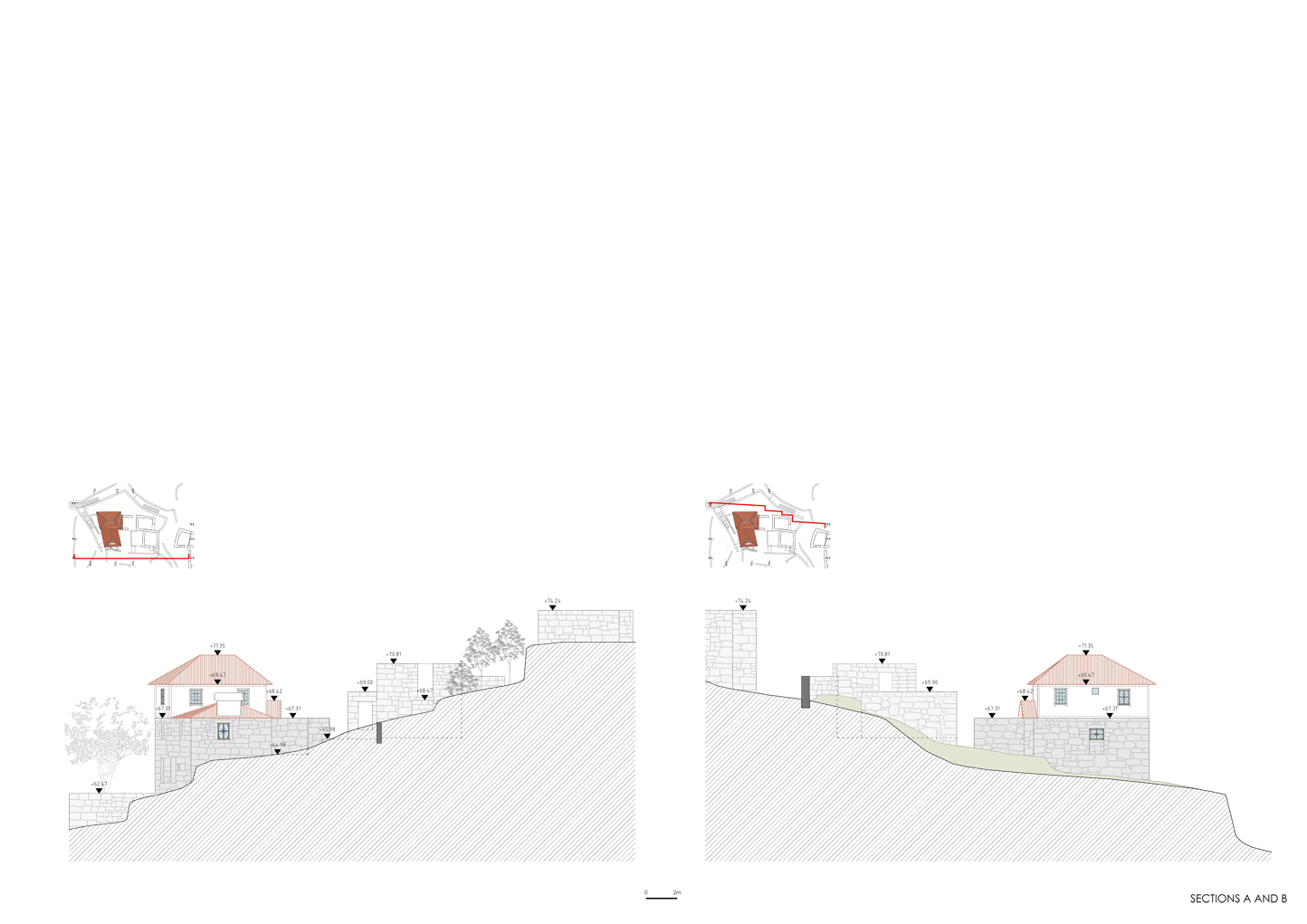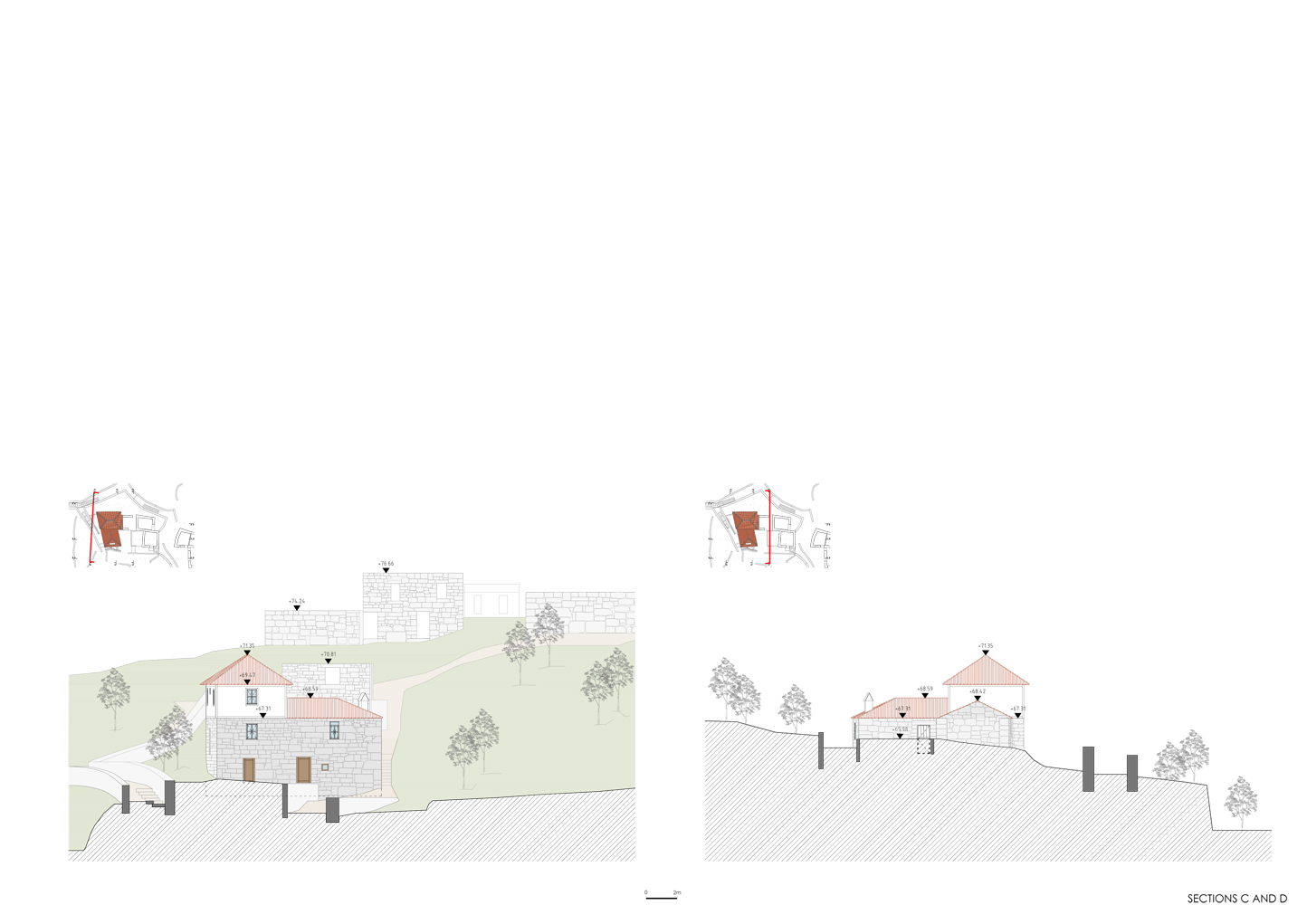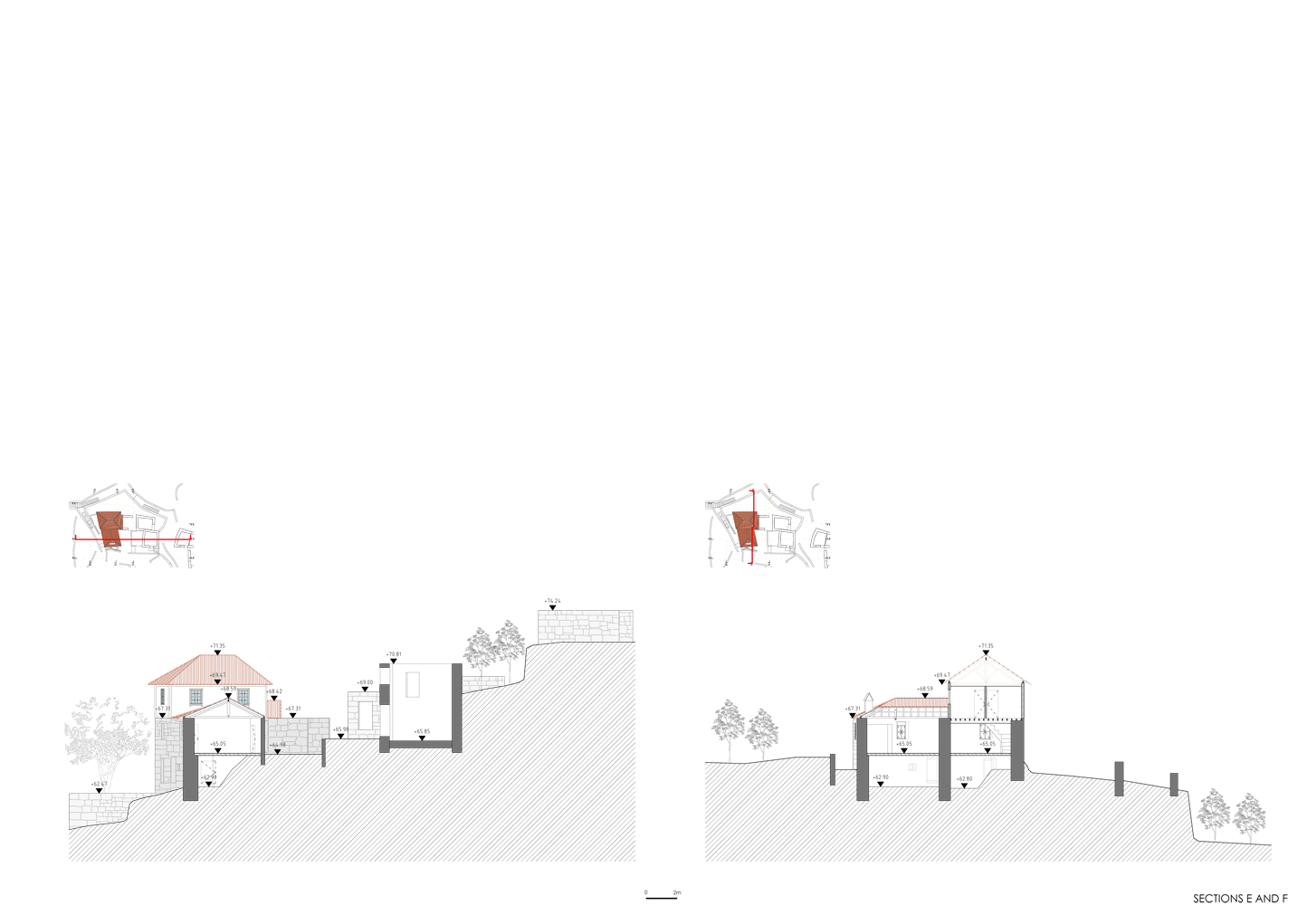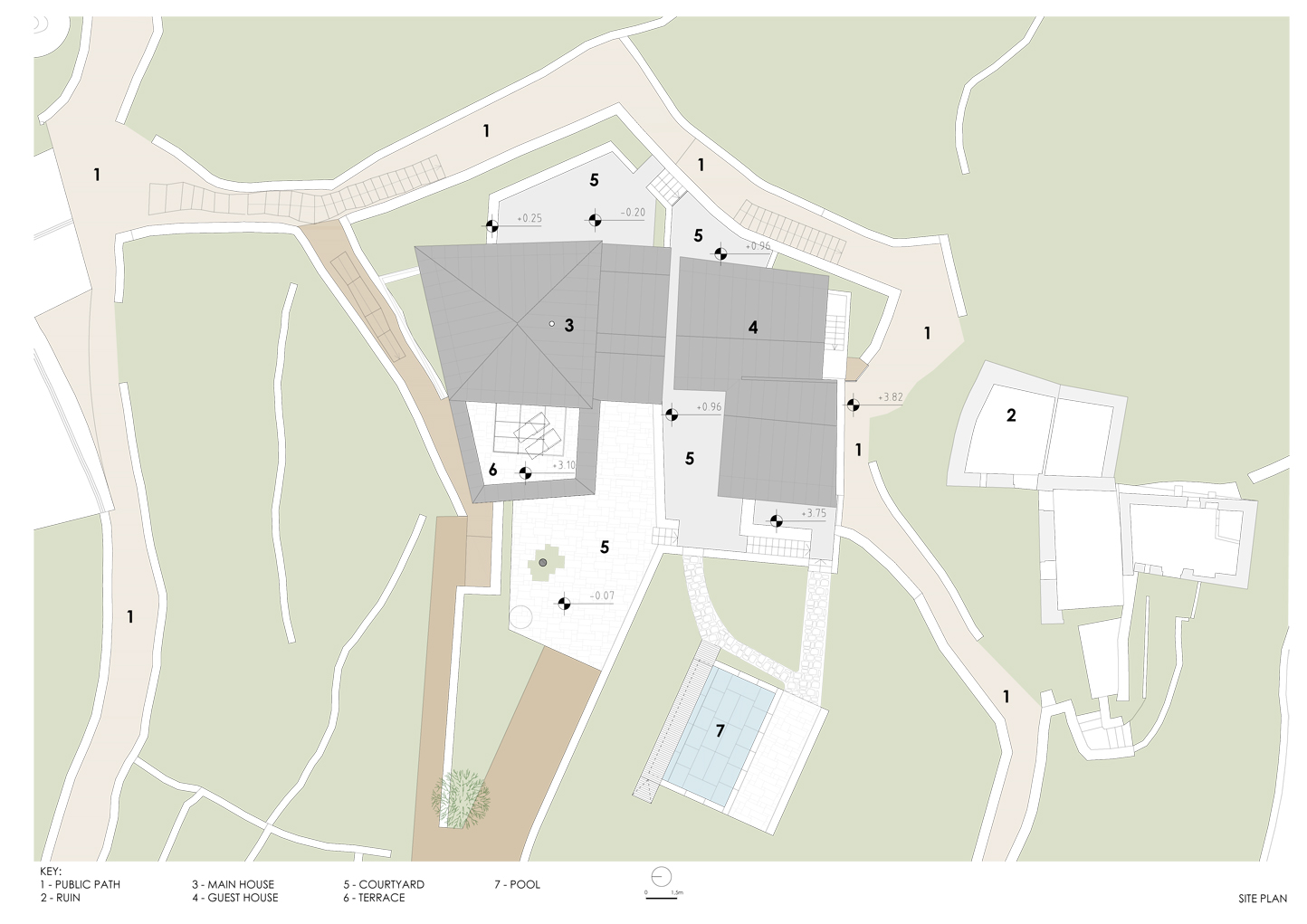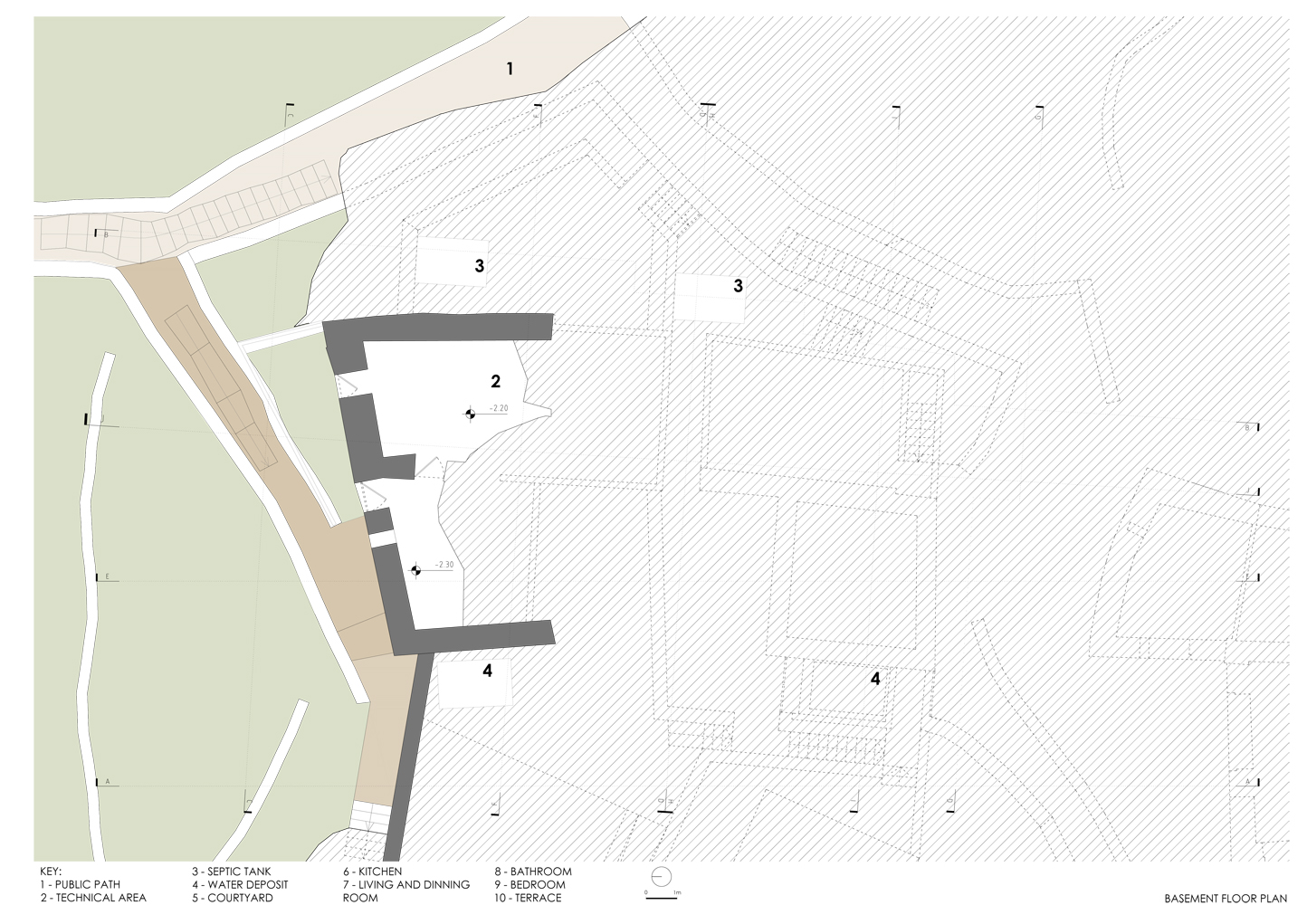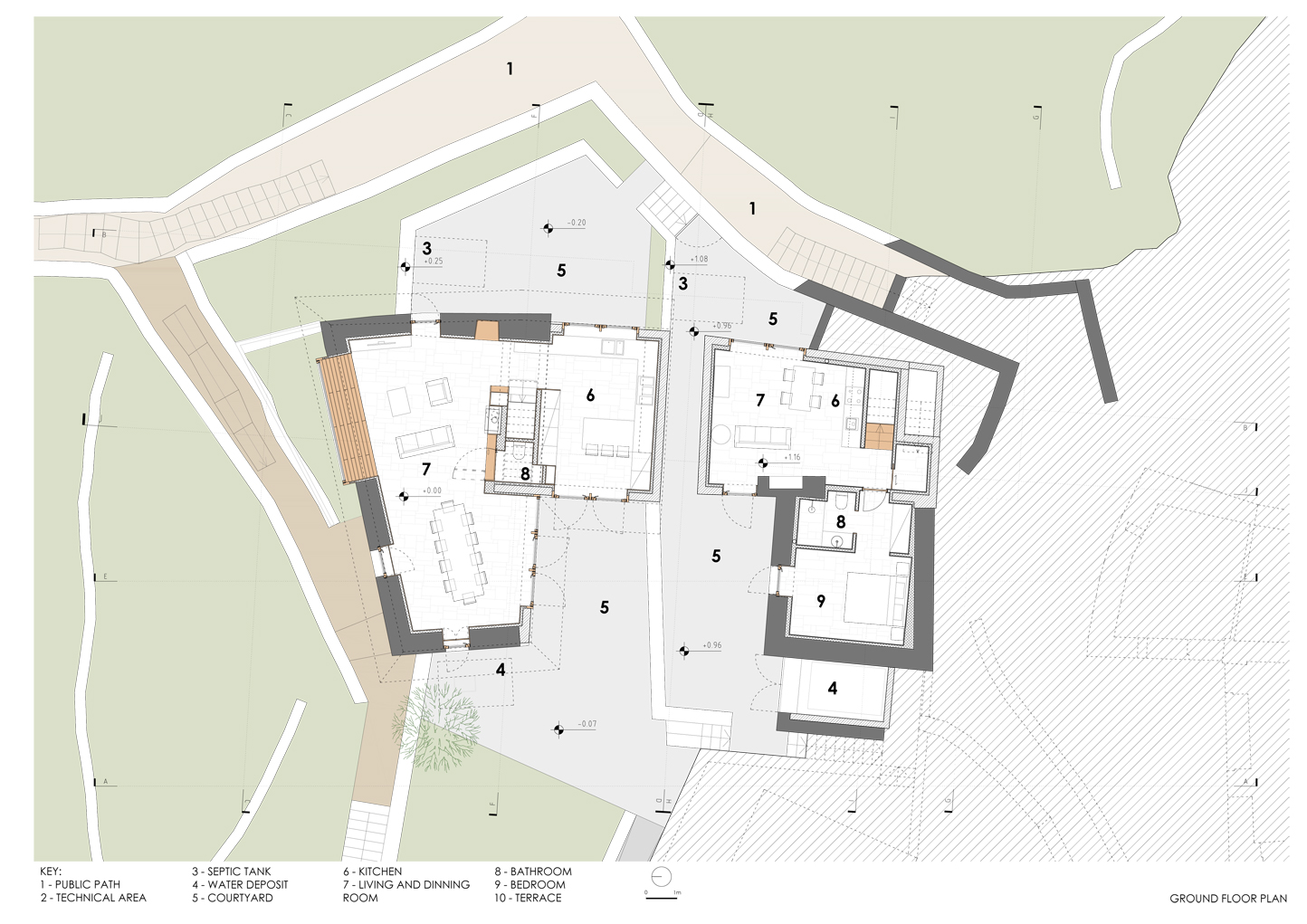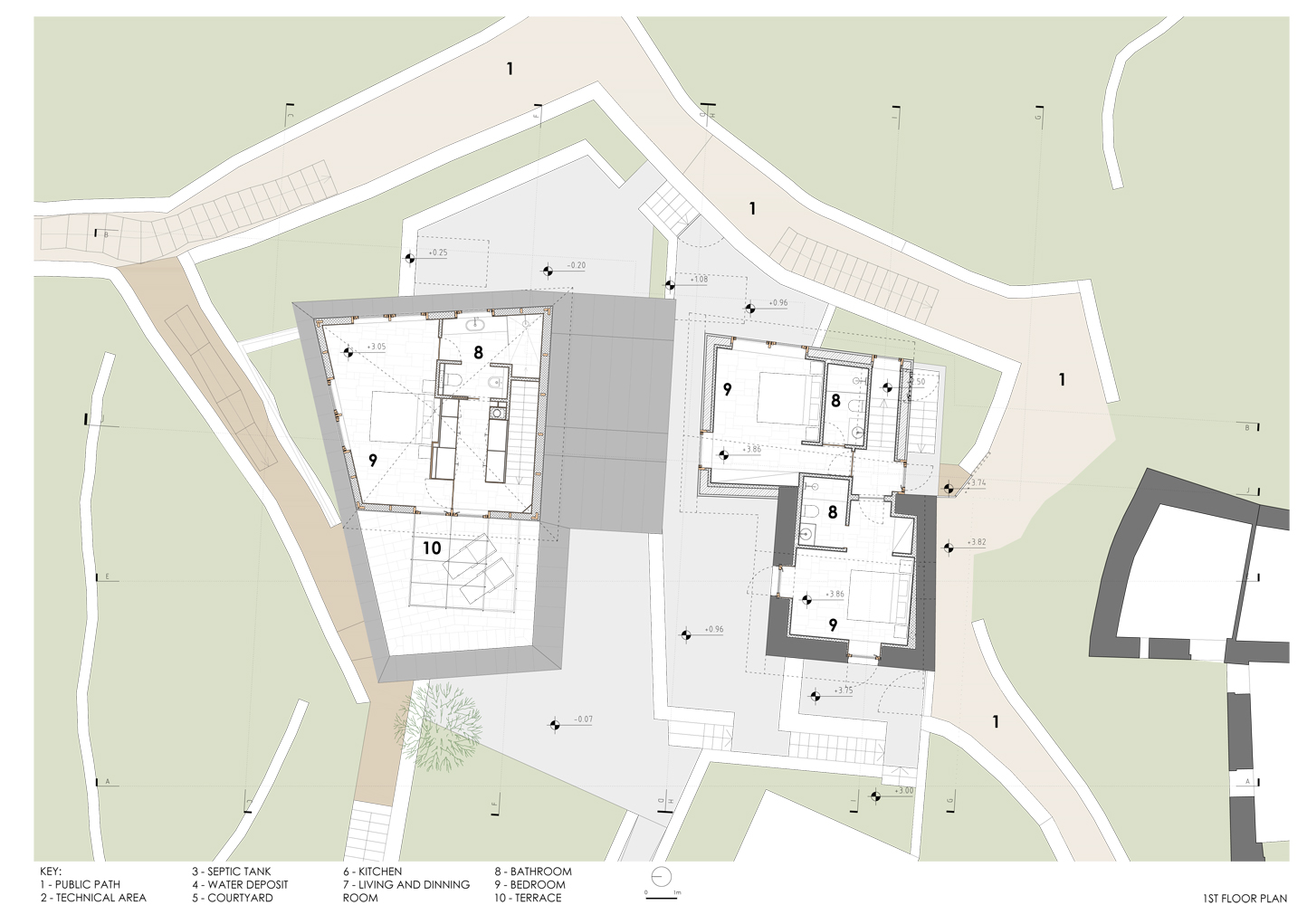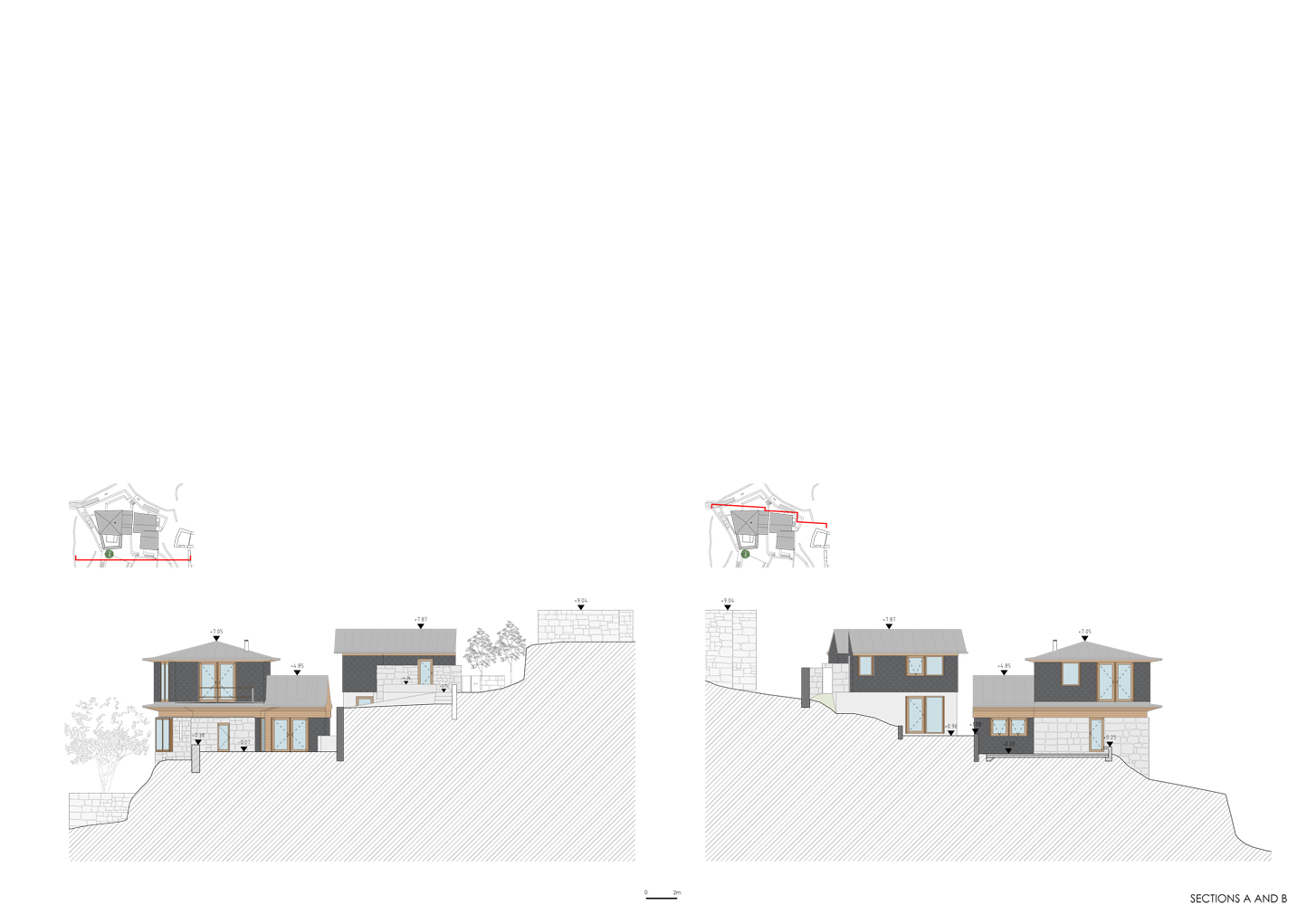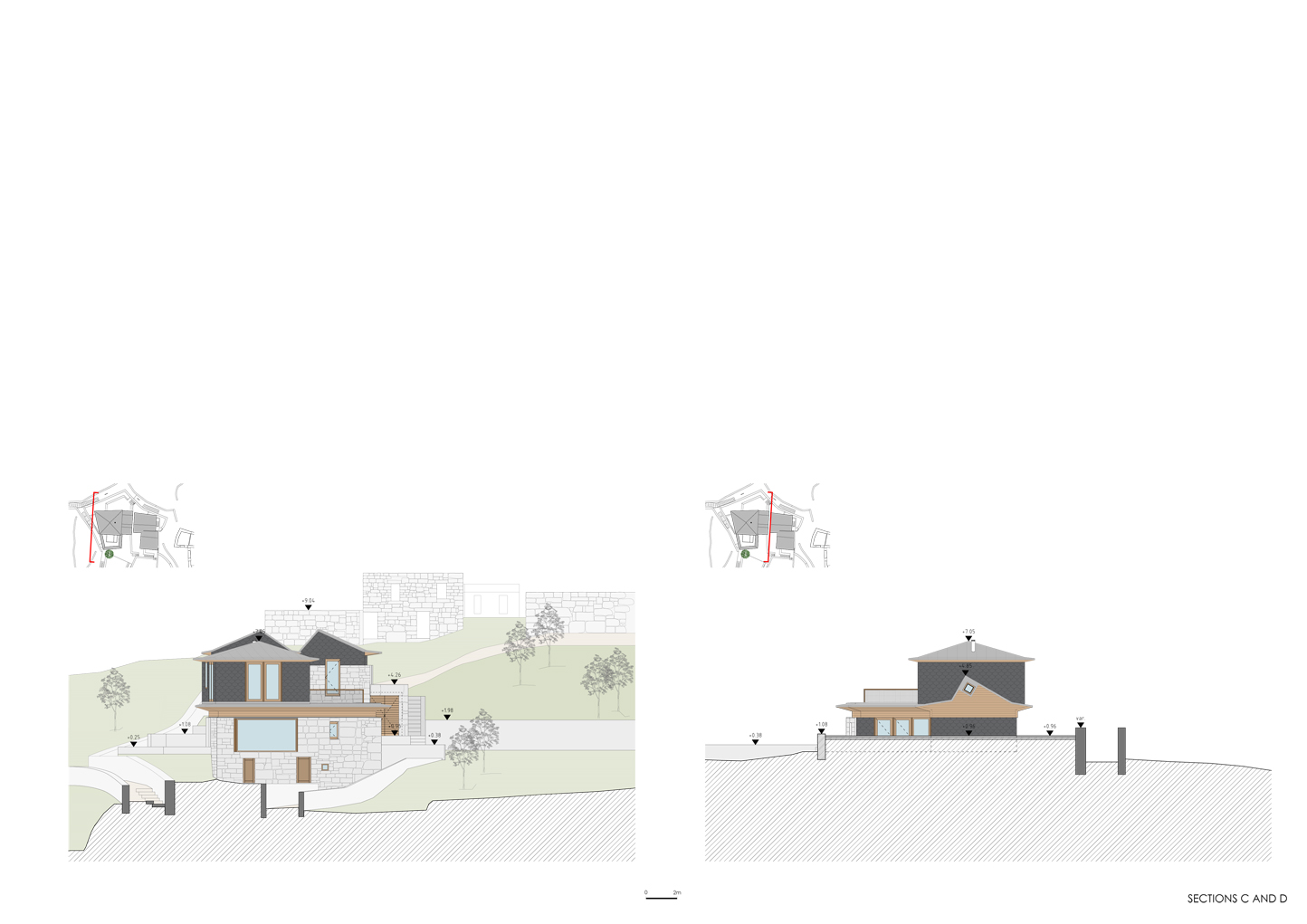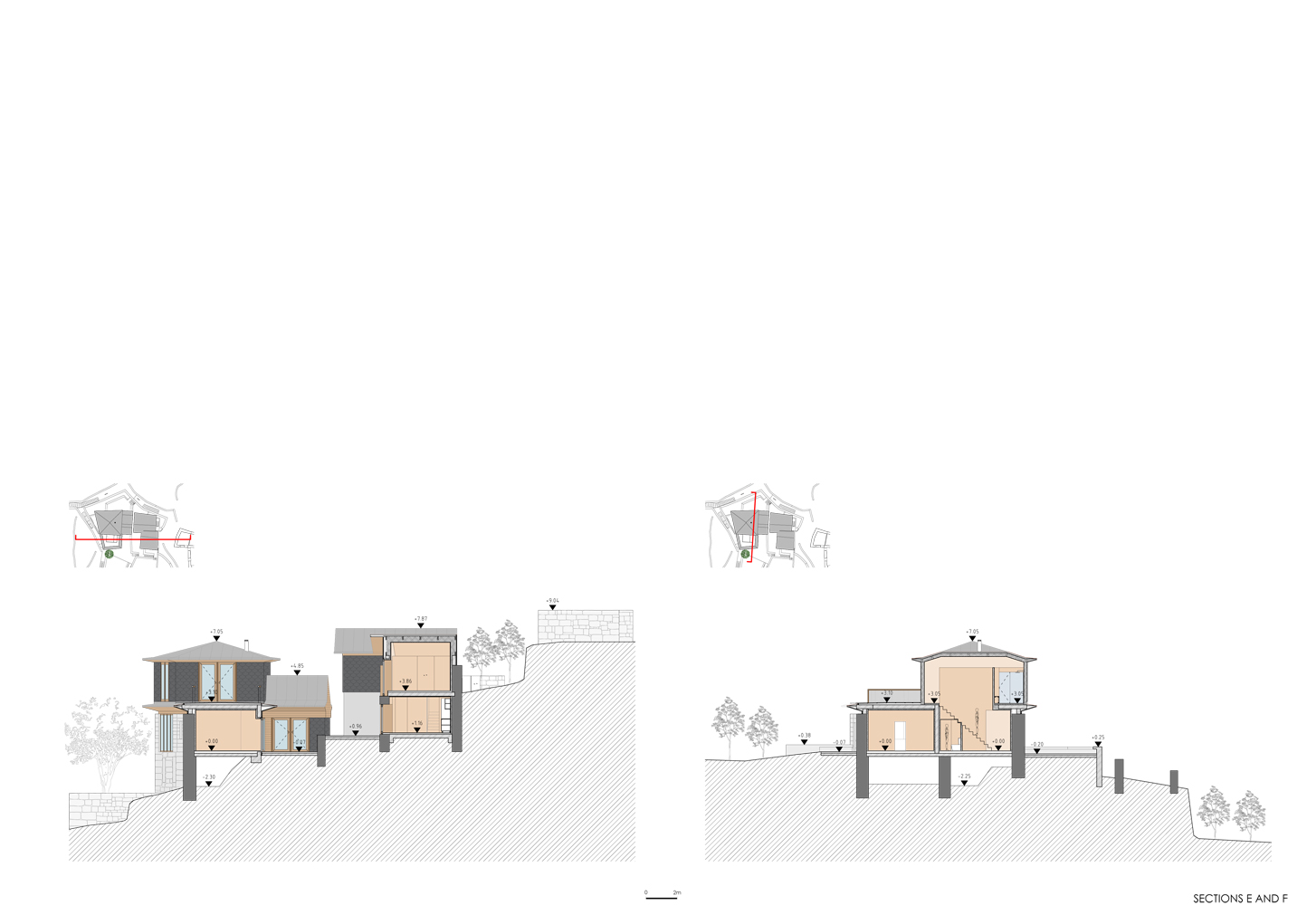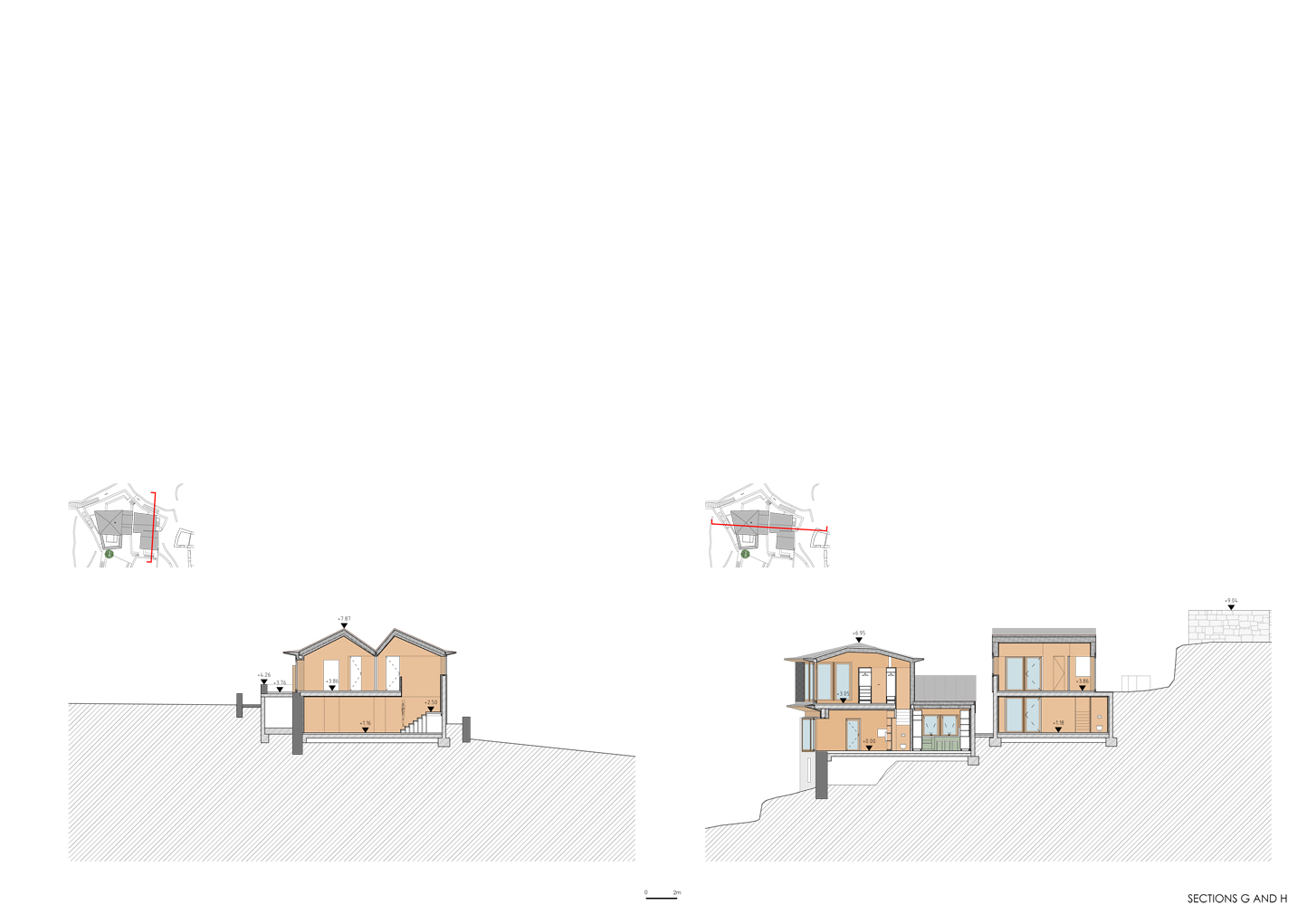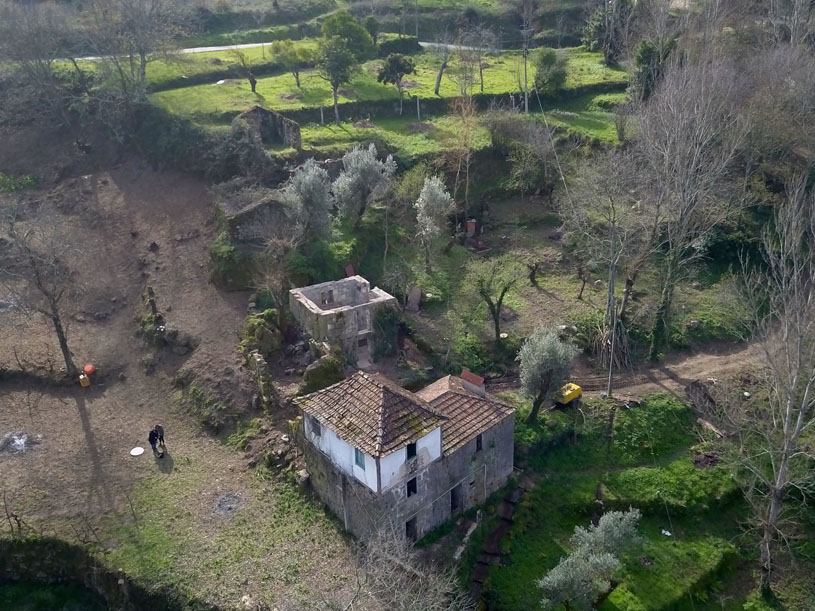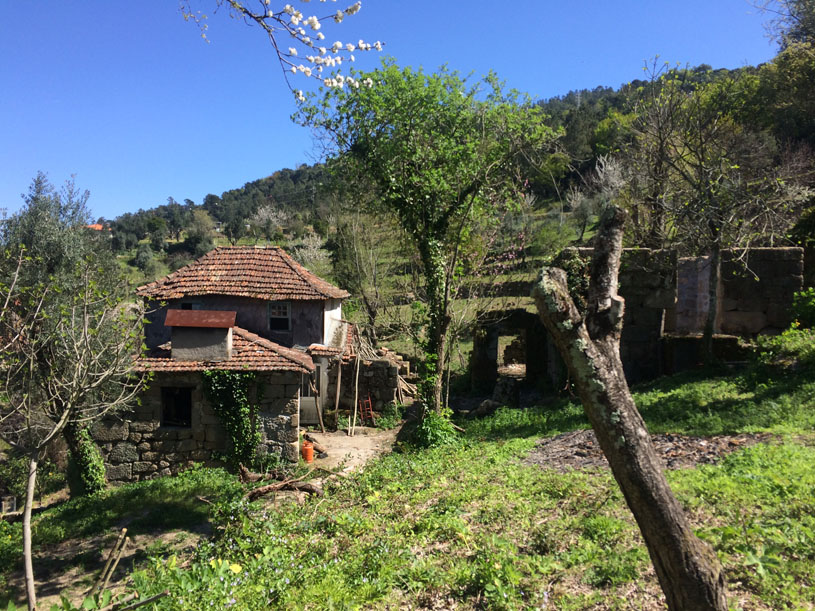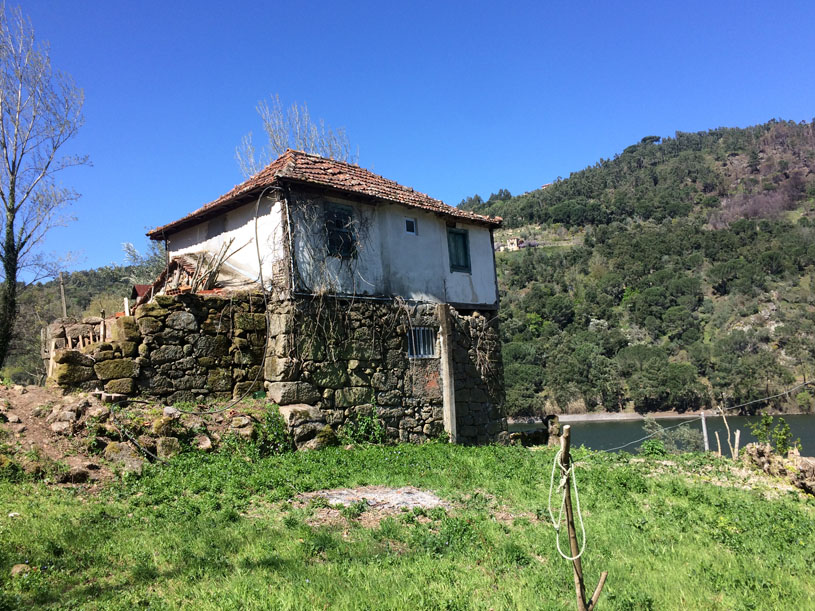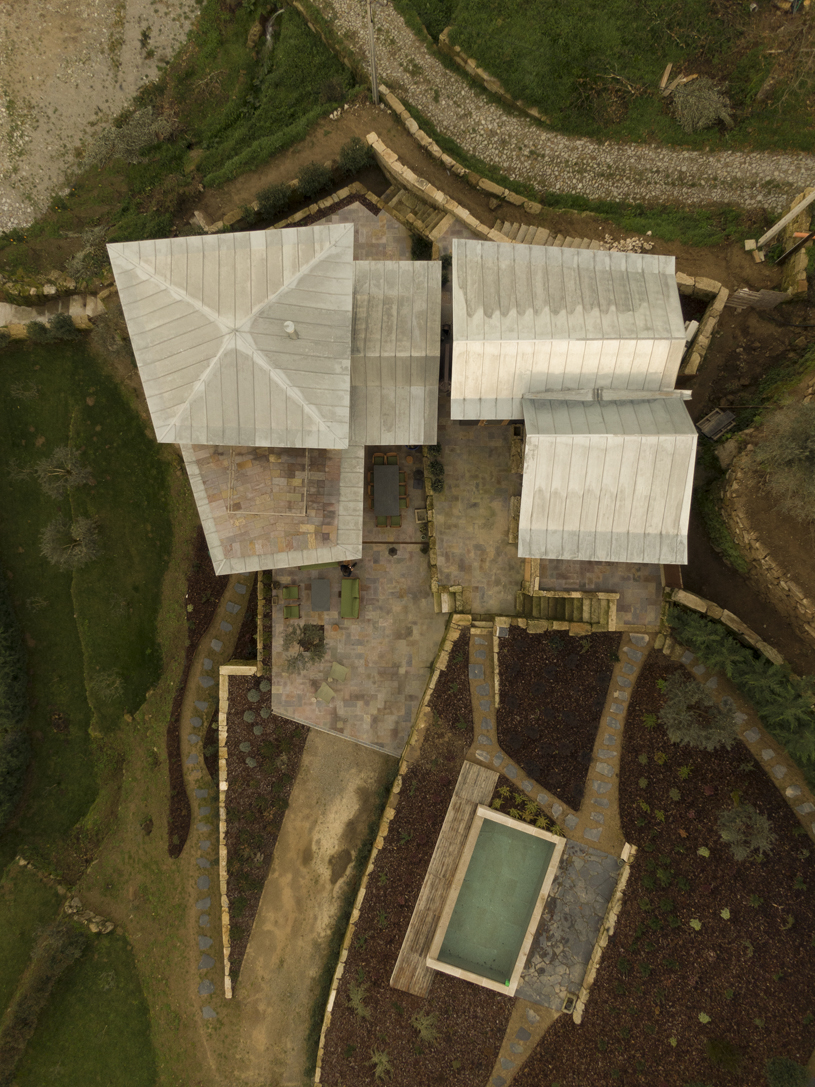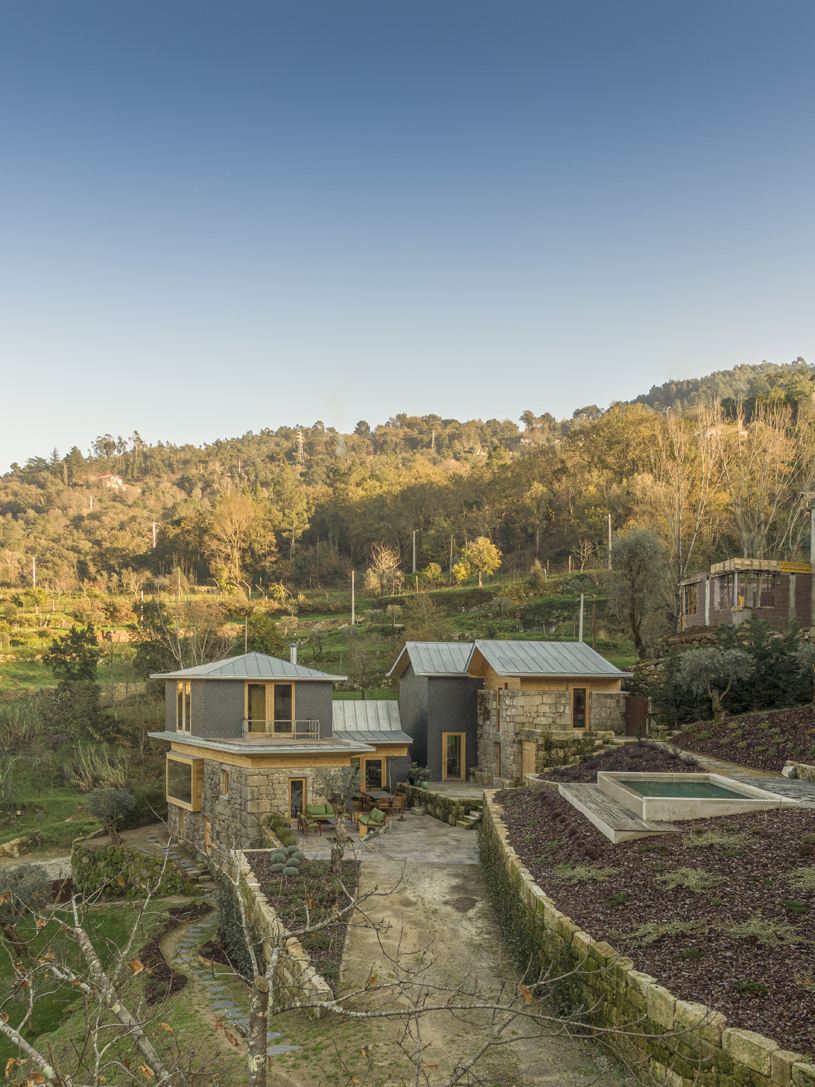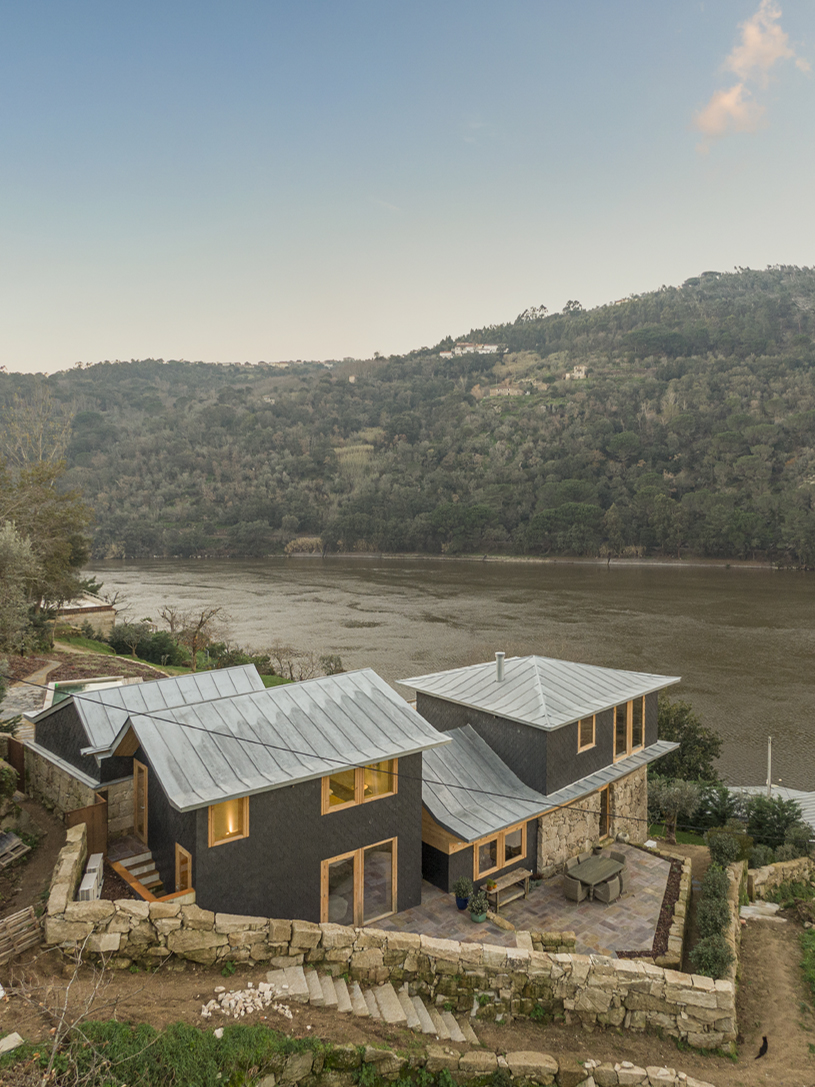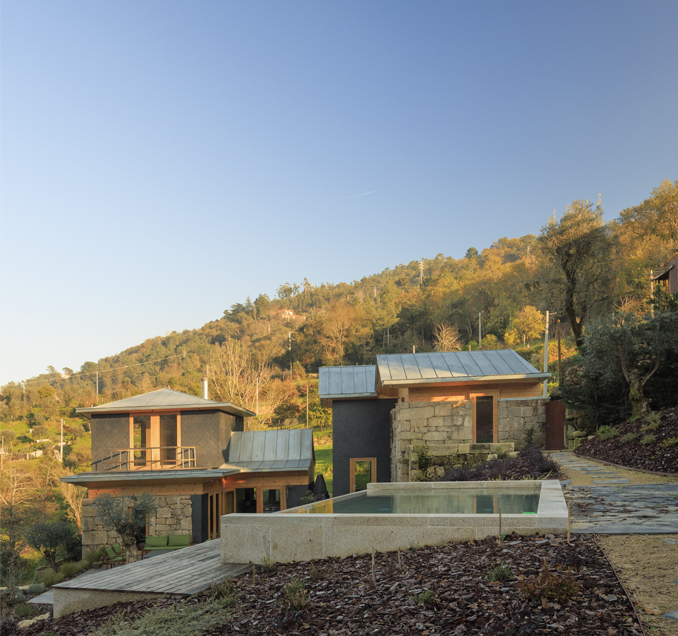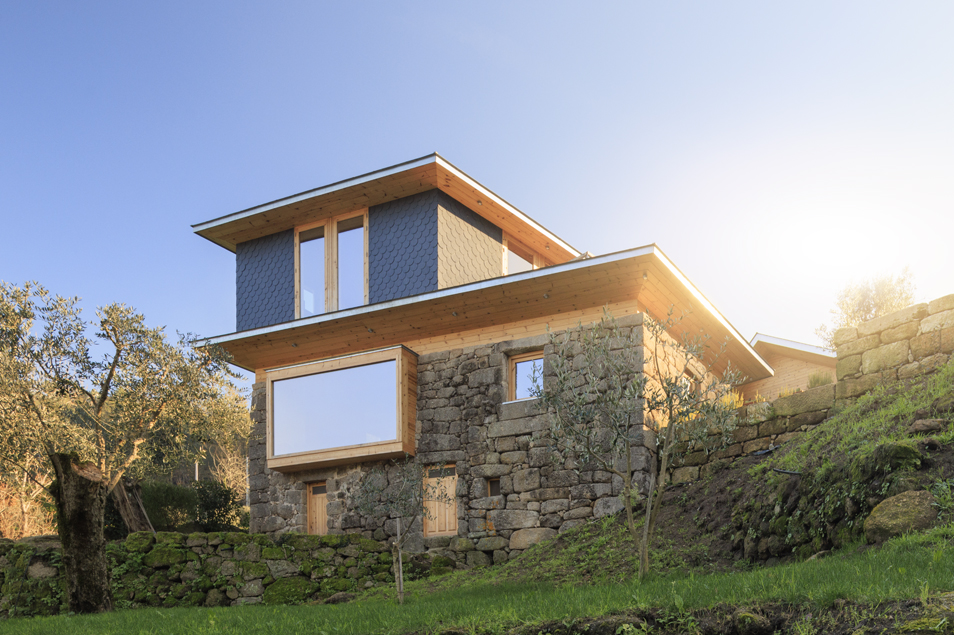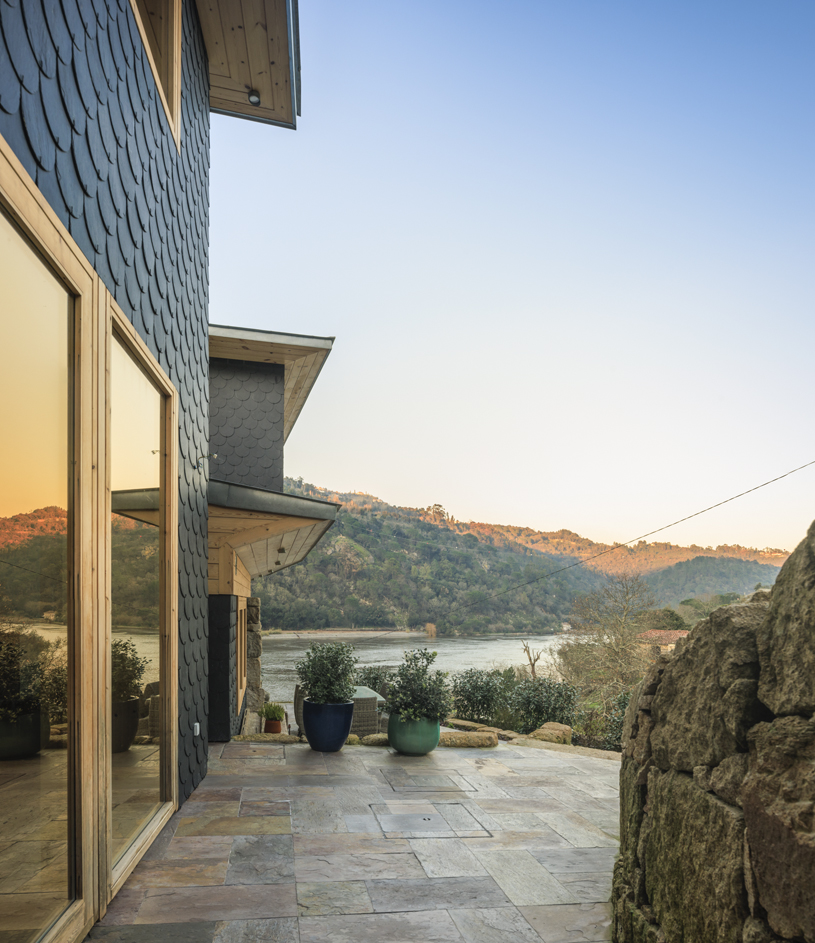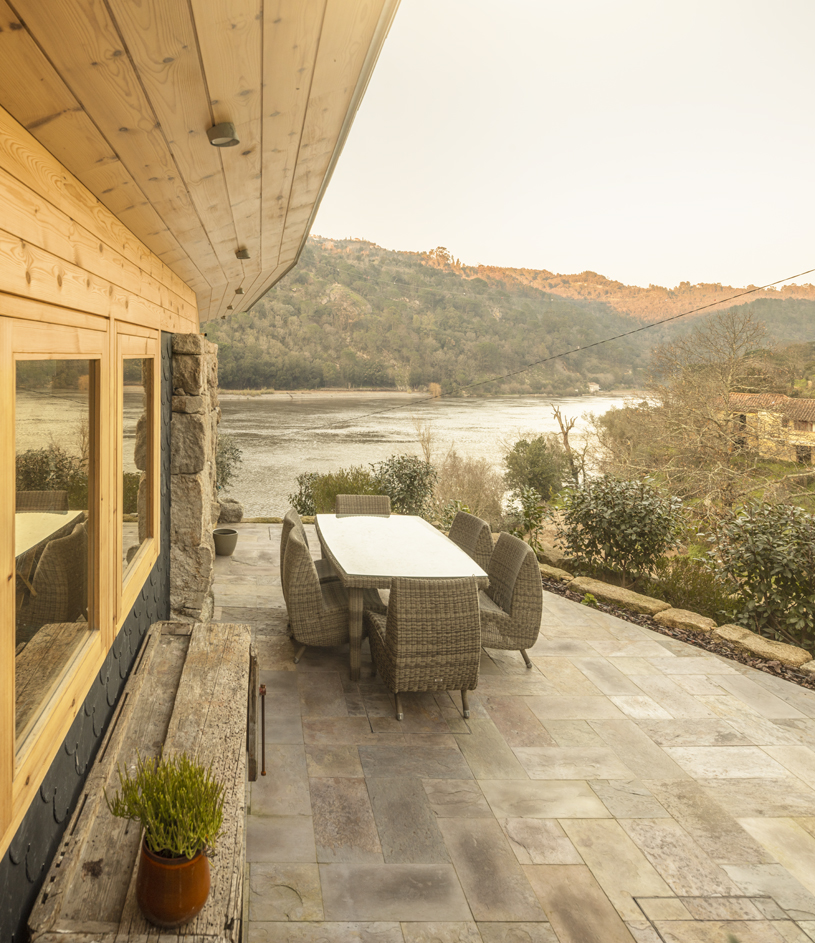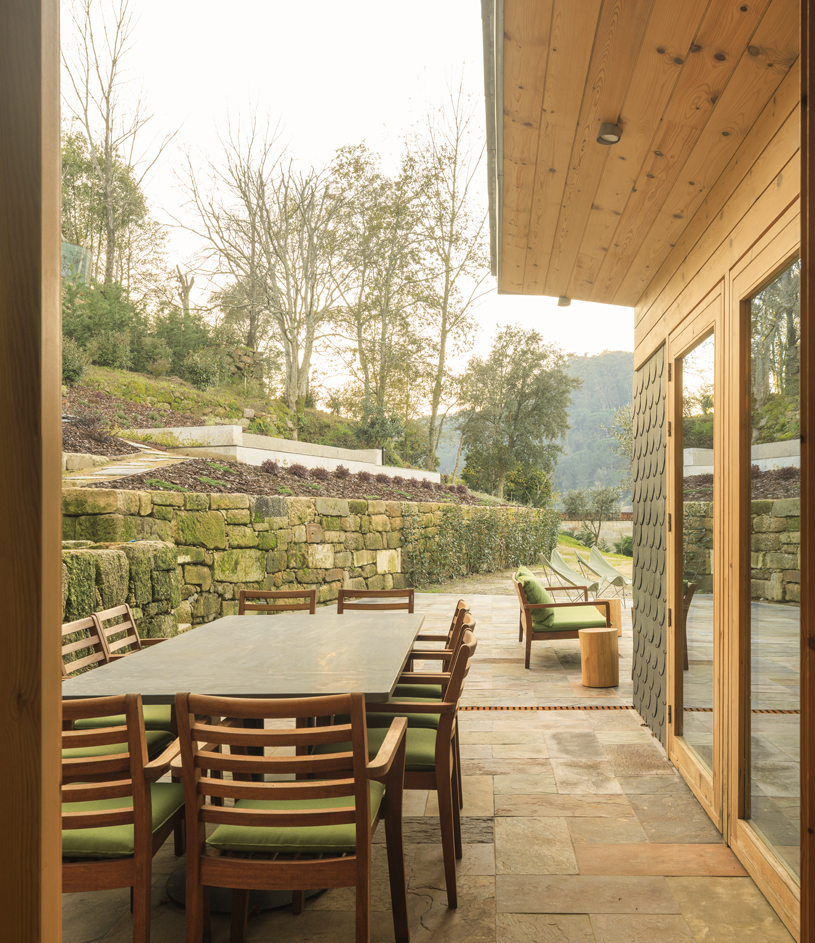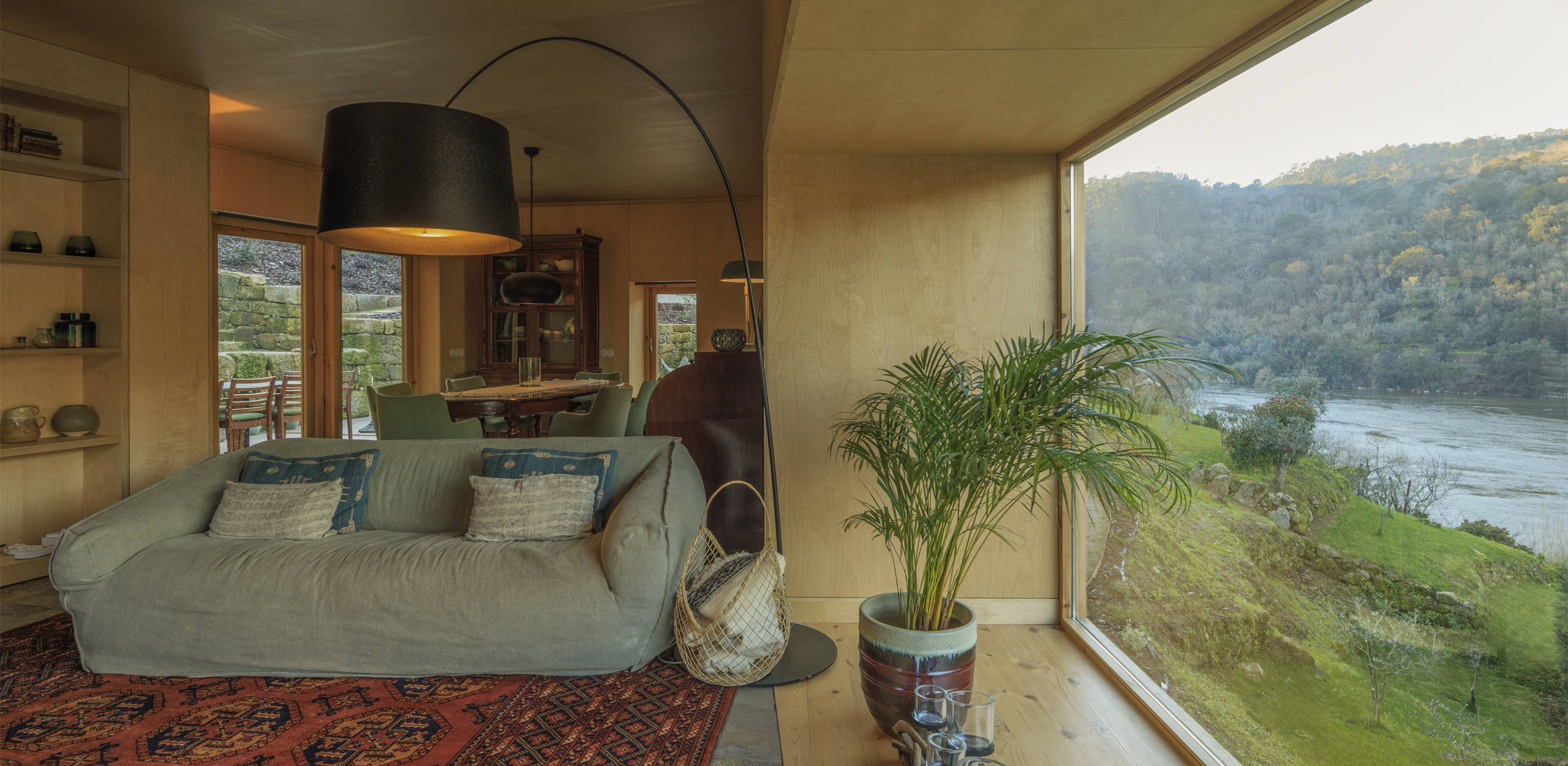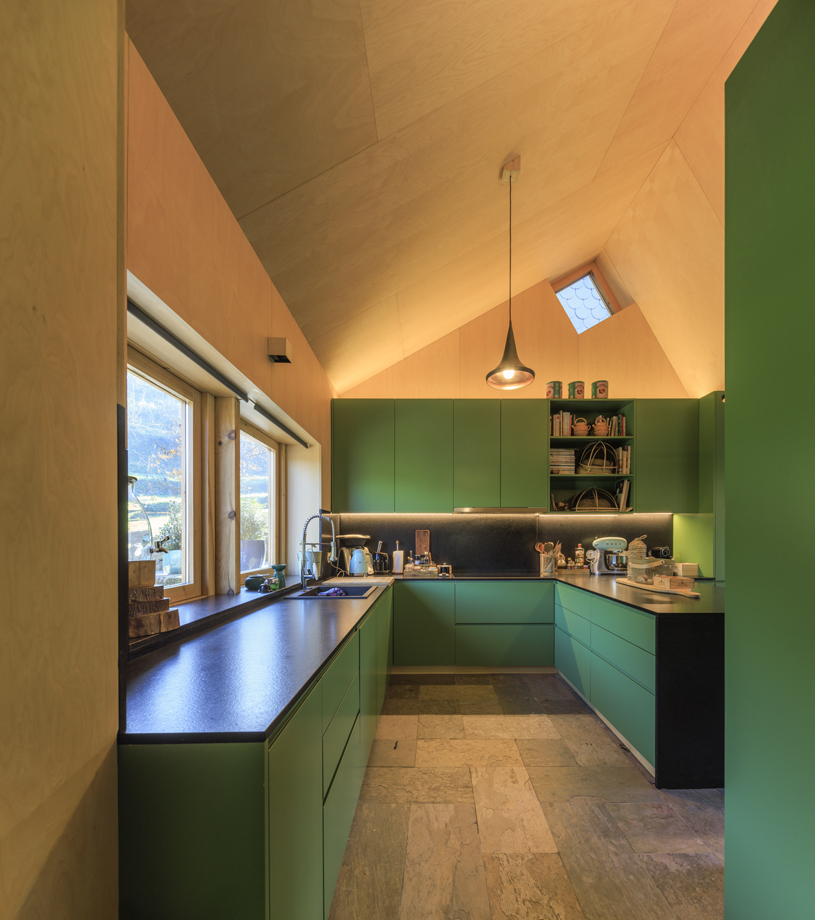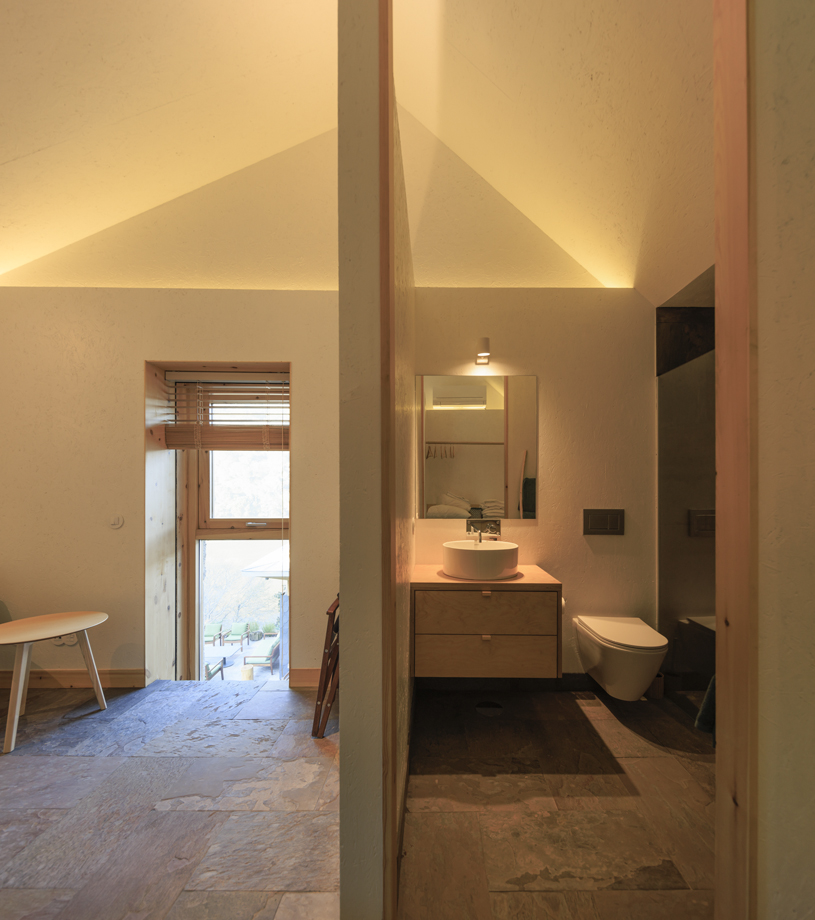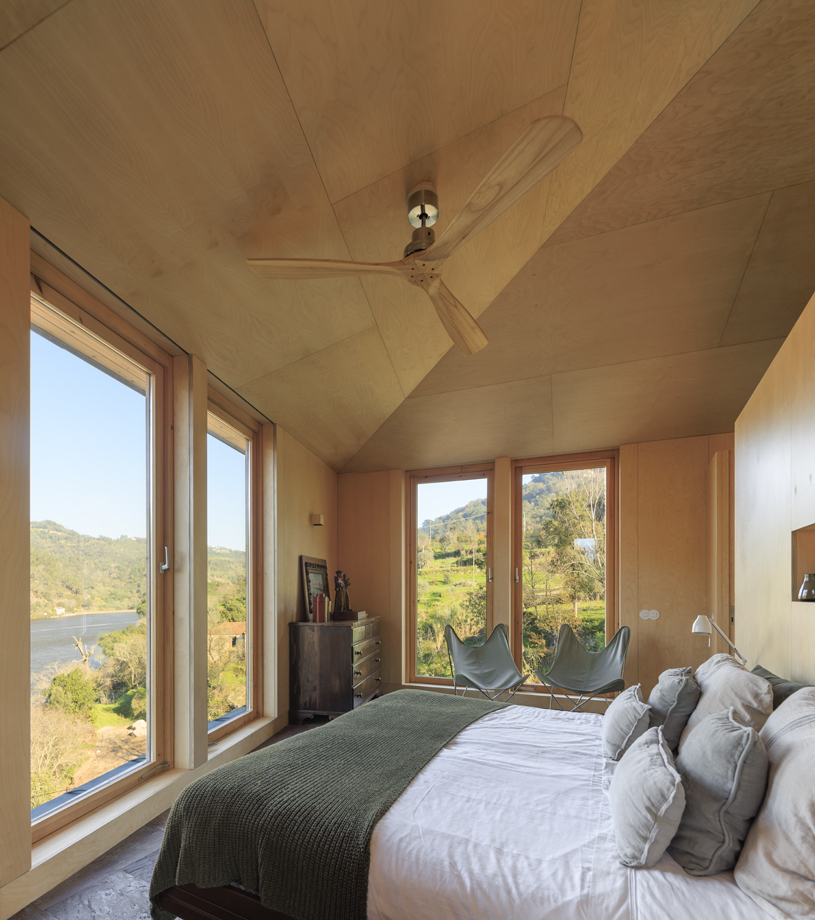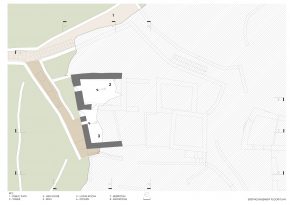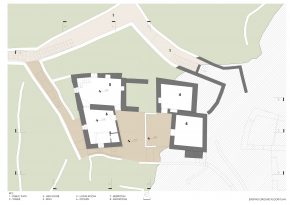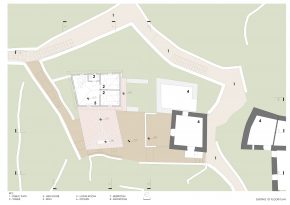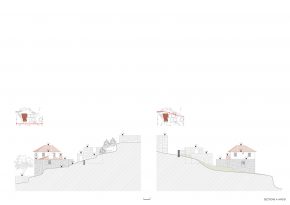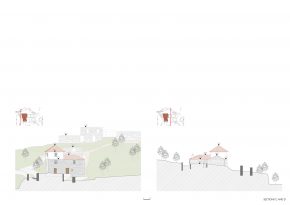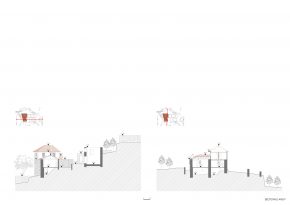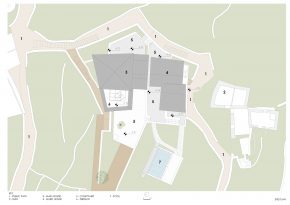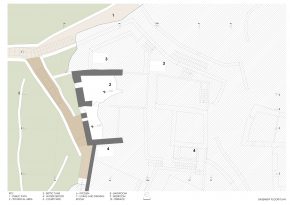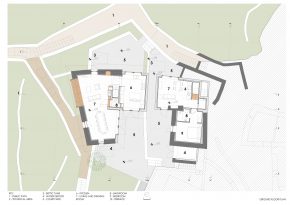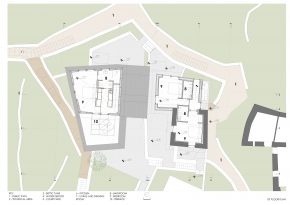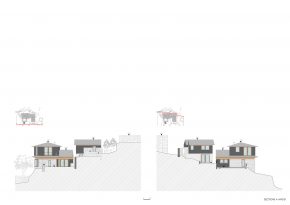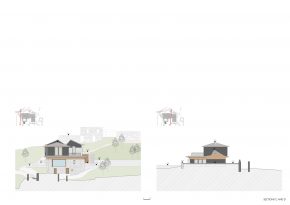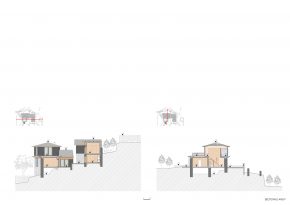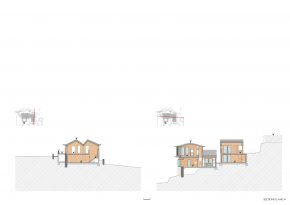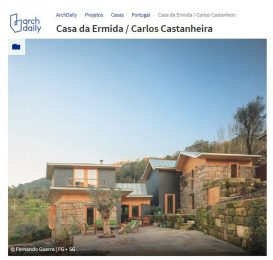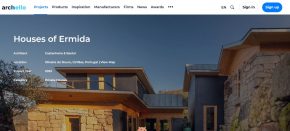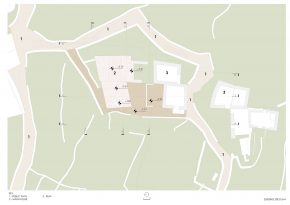
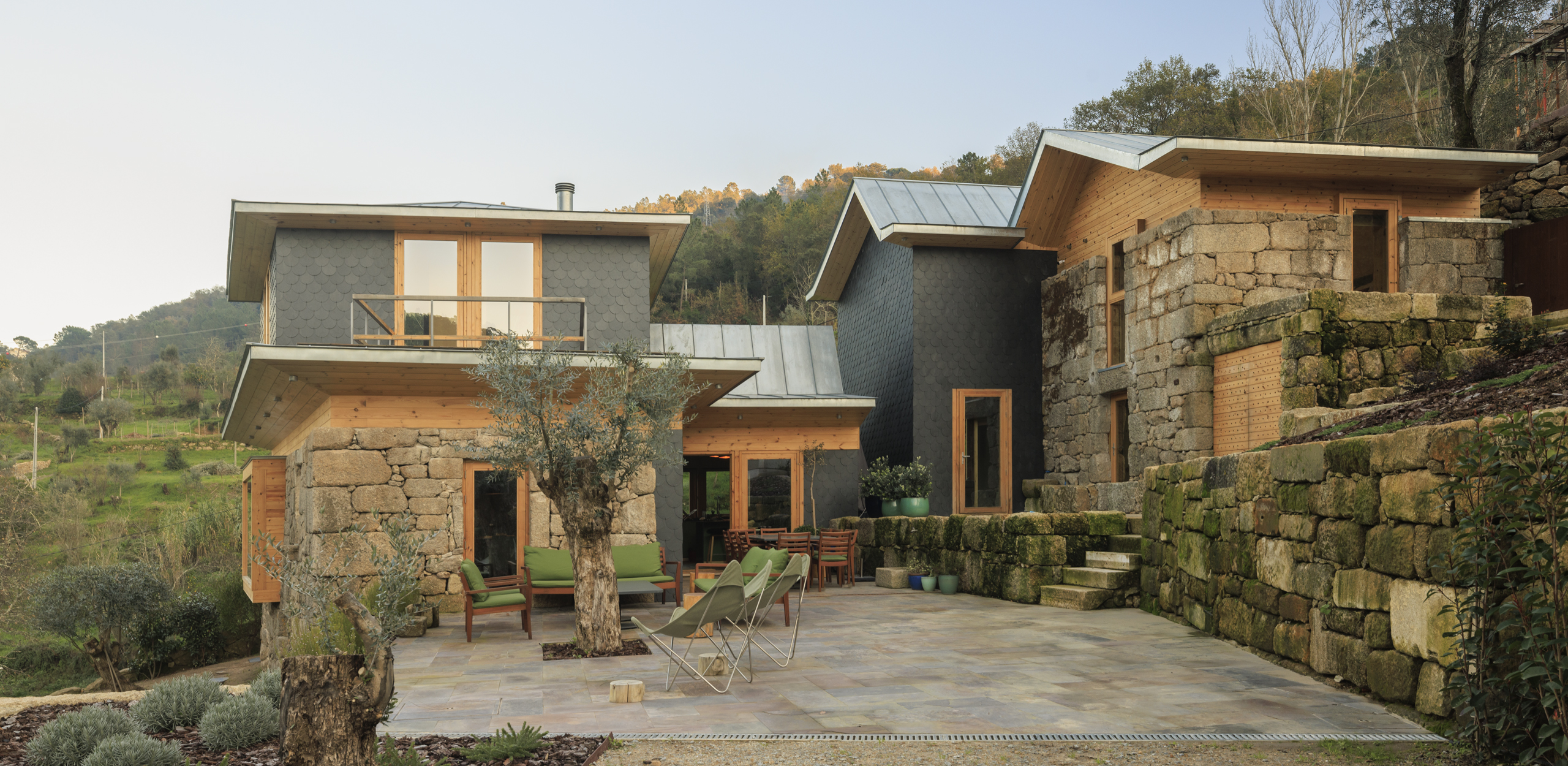
Houses of Ermida
YEAR
2018 - 2022LOCATION
Cinfães do Douro, PortugalTYPE
ResidentialDESCRIPTION
The Houses of Ermida was the name I gave them, as Ermida is the name of the Place.
There they were, and nicely, raised above the River. The River Douro.
When the dam of Carrapatelo was built, the River rose above the land and the Houses. Many were submerged, hidden in the water.
The planning classification of Protected Reservoir Area was applied, defined as a line 50m from the bank of the River. The river, that rises … and falls. It depends.
The line, drawn on paper, they told us, just bites the eaves of the Ermida Lower House. It is in a protected area. Although in ruins, it is protected.
The Upper House is outside this rigorously drawn line, and the freedom that gives is always sought and welcomed.
When I visited Ermida, I drove down the ramp, hoping not to meet another car coming up.
Down below, the ruins, of what were once houses lived in by families, showed stonework details that were made by people who knew how to work with stone and how to use it to form living spaces.
These remains of homes that longer existed as a result of changing times.
Given the beauty of the Place, it may seem strange that someone would stop wanting to live there. Only necessity forces you to leave so much behind.
What remained, gave way to ruins, that bit by bit were somewhat consumed by Nature.
Rich in history and stories. Not known, but imagined.
The Upper House. What to do with something that was just a memory?
Excited by the beauty of the place, the new owners imagined the transformation of those stones into spaces, into comfort, rest and the coming together of family and friends. Contemplation.
Implicit in its purchase, was its renovation. Or was it its re-structuring?
I asked myself … but how? As I always ask myself…
Whatever Nature and time had taken over, we cleared away.
Little by little, we got a better understanding of the forms of the stones, the outline of the volumes, the sun and light.
We secured what existed, intervening without altering the morphology of the old House.
We reintroduced timber structures. Here and there we risked making more generous openings.
Over-looking the river.
Downstairs: The Kitchen and Living Room. Upstairs: A Bedroom and a Bathroom.
The volume remains as it was. The materials are the same, except for the roofing, in standing-seam Zinc, which adapts better to the twisted geometry. And provides quality.
The Upper House, which although nearly touching the lower one, sits outside the Protected Area, at about fifty-five meters from the river bank. Here, everything seemed easier, more immediate. But in Architecture, the immediate is treacherous.
Issues relating to damp had to be addressed, of course it was dripping off the stones, which are actually the walls.
Walls to be stabilized, new timber structures added for floors, walls, and roofs.
Although it was a single house, it had two separate volumes and two separate roofs. To try and unify them would have been a mistake.
Although there are two houses, with two distinct legislative processes, they are understood as a whole and are combined volumetrically, through the materiality and texture of the few materials they are built and covered with; granite, worn away by time, over which timber volumes are erected and then covered externally by slate and internally by birch plywood.
The floors, inside and out, were paved with multi-coloured slate.
Refurbishment of a ruin implies the introduction of services, previously absent, but nowadays essential.
These are in. The concern was to keep them out of sight, almost unnecessary.
We cleared away the vegetation that was invasive or excessive.
We wait for balance to re-establish itself; something that will adjust to the future naturally. Constantly.
Now it is possible to live there. For a moment it seemed that they didn’t want to .
Maybe because of having the roof eaves 49.5m from the bank of the River.
Maybe that is what Planning means.
Porto-Istambul, 05, June 2023
Carlos Castanheira
DRAWINGS
CREDITS
Architect:
Carlos Castanheira
Office in Portugal:
CC&CB. Architects, Lda.
Project Coordinator:
Isabel Carvalho
Project Team
Filipa Guedes
Mical Pinheiro
Mariana Mendes
Susana Oliveira
Rita Cabral
Catarina Araújo
Sara Cabral
Gabriela Vieira
3D Visualisation:
Diana Vasconcelos
Eva Martins
Local architect:
Mário Oliveira
Engineering
Structural:
Engº João Almeirante
Electrical:
Engº Daniel Oliveira
Gatengel, Projectos de Engenharia, Lda.
Hydraulic:
Engº João Almeirante
Carpenter:
Risco Próprio, Lda
Construction Company:
Aloísio Pinto Unipessoal, Lda
Construction area:
Main house: 115m2
Guest house: 112,80m2
Photography:
Fernando Guerra FG+SG
Fotografia de Arquitectura
FEATURED ON
